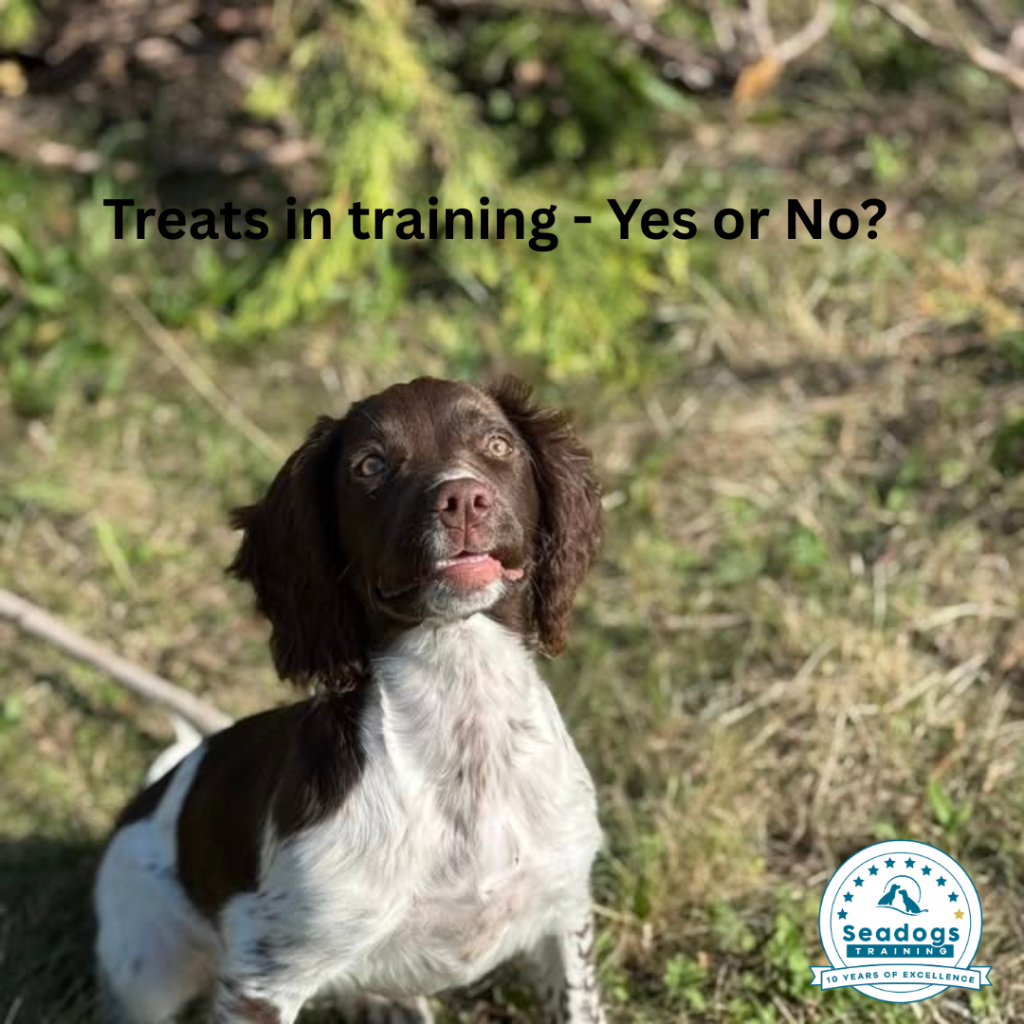
Using treats in dog training is one of the most popular and effective ways to teach new behaviours. Food rewards can motivate dogs, build focus, and help them learn quickly. But while treats are useful, they’re often overused — and sometimes used incorrectly. When this happens, training can stall and engagement with your dog can suffer.
Let’s explore how to use treats properly, find what truly motivates your dog, and when to start moving beyond food rewards.
The Power of the Treat
When used correctly, treats can be a brilliant way to lure a behaviour. For example, a small piece of food can guide your dog into a sit or a down position. At the start of training, this helps your dog understand what you’re asking for and rewards them for getting it right.
However, problems arise when treats become the focus rather than the learning tool. Many owners find themselves showing the treat before giving a command, essentially saying, “Do this and you’ll get food.” That’s a bribe, not training. The goal is for your dog to respond to you, not the treat in your hand.
Timing Is Everything
One of the biggest mistakes in treat training is poor timing. Dogs live very much in the present, so the reward must come immediately after the correct behaviour.
If your timing is even a second off, you risk rewarding the wrong action. For instance, if your dog sits when asked but jumps up just before you deliver the treat, you’ve rewarded the jump, not the sit. Consistent, well-timed rewards help your dog clearly understand what earns them praise.
Phasing Out the Food
Treats are designed to help teach, not to serve as a permanent motivator. Once your dog understands a behaviour, start reducing the reliance on food rewards.
Begin by treating every successful response, then gradually treat less frequently — every second or third time — while increasing verbal praise and affection. Eventually, you can replace treats entirely with other rewards, like a cheerful “Good dog!”, a quick play session, or a favourite toy.
This step is vital for long-term reliability. You want a dog who listens because they enjoy working with you, not one who only responds when food is involved.
Work Out What’s Rewarding for Your Dog
Not all dogs find the same things rewarding — and what works for one may fall completely flat for another. The key is understanding what truly motivates your dog in different situations.
Some dogs are very food-driven and will happily work for a treat. Others may prefer a game of tug, a quick chase, or a bit of praise. And then there are dogs — such as many spaniels — who may not care much for food or toys at all, but find the act of hunting or following a scent incredibly rewarding.
If you can tap into what naturally excites your dog, you can use that as a powerful training tool. For example, a spaniel who loves to hunt can earn a chance to sniff an area or retrieve an item as a reward for good behaviour. That kind of real-life reward can be far more motivating than a biscuit.
Understanding your dog’s breed tendencies, personality, and preferences helps you choose the right reinforcer for the right moment — keeping training both effective and enjoyable.
Engagement Over Edibles
The real key to great training isn’t treats — it’s engagement. A truly trained dog pays attention because they’re interested in you and what you’re doing together.
Build engagement through play, praise, and meaningful interaction. Use your voice, body language, and enthusiasm to make training fun. When your dog looks to you for guidance — not just for food — you’ll find that cooperation comes naturally.
The Balanced Approach
Treats definitely have a place in dog training — especially when introducing something new — but they should be used thoughtfully. Think of them as a stepping stone to understanding, not the foundation of your dog’s obedience.
Use treats to teach and shape behaviour, find what genuinely motivates your dog, then move on to rewards that strengthen your bond and your dog’s natural desire to listen.
In short:
- Use treats as a teaching tool, not a bribe.
- Time rewards carefully to reinforce the right behaviour.
- Phase out food once your dog understands the task.
- Discover what your dog truly finds rewarding.
- Build engagement through praise, play, and trust.
When you use treats mindfully and tailor your rewards to your individual dog, training becomes not just effective — but deeply rewarding for both of you.
